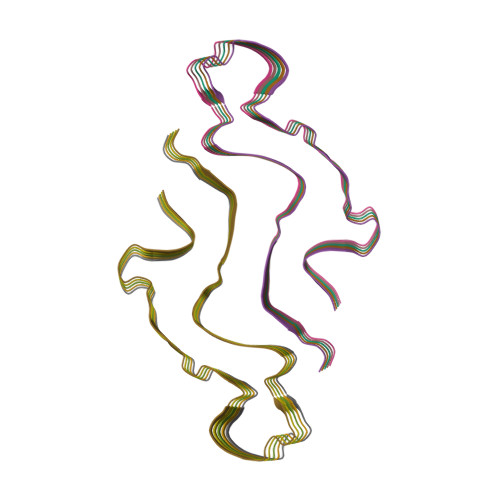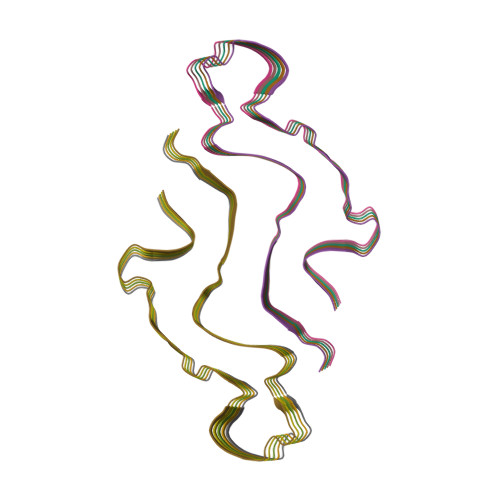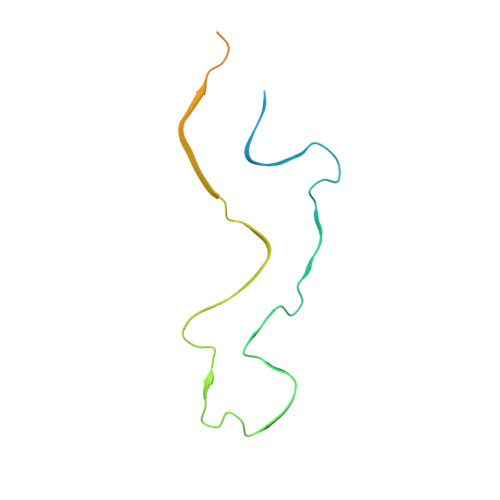Cryo-EM structure of ex vivo fibrils associated with extreme AA amyloidosis prevalence in a cat shelter.
Schulte, T., Chaves-Sanjuan, A., Mazzini, G., Speranzini, V., Lavatelli, F., Ferri, F., Palizzotto, C., Mazza, M., Milani, P., Nuvolone, M., Vogt, A.C., Vogel, M., Palladini, G., Merlini, G., Bolognesi, M., Ferro, S., Zini, E., Ricagno, S.(2022) Nat Commun 13: 7041-7041
- PubMed: 36396658
- DOI: https://doi.org/10.1038/s41467-022-34743-2
- Primary Citation of Related Structures:
7ZH7 - PubMed Abstract:
AA amyloidosis is a systemic disease characterized by deposition of misfolded serum amyloid A protein (SAA) into cross-β amyloid in multiple organs in humans and animals. AA amyloidosis occurs at high SAA serum levels during chronic inflammation. Prion-like transmission was reported as possible cause of extreme AA amyloidosis prevalence in captive animals, e.g. 70% in cheetah and 57-73% in domestic short hair (DSH) cats kept in zoos and shelters, respectively. Herein, we present the 3.3 Å cryo-EM structure of AA amyloid extracted post-mortem from the kidney of a DSH cat with renal failure, deceased in a shelter with extreme disease prevalence. The structure reveals a cross-β architecture assembled from two 76-residue long proto-filaments. Despite >70% sequence homology to mouse and human SAA, the cat SAA variant adopts a distinct amyloid fold. Inclusion of an eight-residue insert unique to feline SAA contributes to increased amyloid stability. The presented feline AA amyloid structure is fully compatible with the 99% identical amino acid sequence of amyloid fragments of captive cheetah.
Organizational Affiliation:
Institute of Molecular and Translational Cardiology, IRCCS Policlinico San Donato, 20097, Milan, Italy.


















